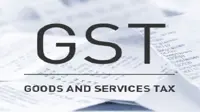Indian ICT spending to cross Rs1,000 billion in 2006: Gartner
07 Dec 2005
Mumbai: In its latest predictions Gartner projects total Indian enterprise IT spending (excluding consumer IT spending) including hardware, software, telecommunications and IT services to reach Rs1,093 billion rupees in 2006 growing at a CAGR of 20.8 per cent from 2004 to 2009.
India can expect to see an annual enterprise ICT spending growth rate (AGR) of 23 per cent in 2006, with:
- Rs739 billion on telecom services and equipment (a 27 per cent increase over 2005)
- Rs172 billion on hardware (a 13 per cent increase over 2005)
- Rs141 billion on IT services (a 22 per cent increase over 2005)
- Rs41 billion on software (a 17 per cent increase over 2005)
| India (Rupee) Millions | 2004 | 2005 | 2006 | 2009 | CAGR 2004-2009 | AGR 04-05 | AGR 05-06 |
| Hardware | 129,519 | 152,347 | 171,854 | 238,632 | 13.0% | 17.6% | 12.8% |
| IT Services | 94,702 | 115,462 | 140,776 | 224,968 | 18.9% | 21.9% | 21.9% |
| Software | 30,409 | 34,870 | 40,706 | 62,910 | 15.6% | 14.7% | 16.7% |
| Telecom | 501,009 | 581,101 | 739,910 | 1,419,062 | 23.1% | 16.0% | 27.3% |
| India Total | 755,640 | 883,780 | 1,093,246 | 1,945,572 | 20.8% | 17.0% | 23.7% |
| Exchange rate | 45.28 | 43.54 | 43.52 | 43.52 |
|
|
|
Announcing the Top Ten Trends and Predictions for 2006, Gartner said the impact of consumer technologies on enterprise IT will continue to spread rapidly, despite attempts to slow them down or policies designed to discourage their use. Gartner predicts that between 2006 and 2012 the majority of new information technologies adopted by enterprises will have their roots in the consumer market.
"Many technologies have in the past been introduced and have found acceptance in consumer markets, only to be ignored by enterprises," says Dion Wiggins, vice president and research director at Gartner. "Dismissing graphical user interfaces as toys and the internet as 'not ready for prime time' are classic examples. The trend continues today with technologies such as instant messaging and games and in the future Web 2.0."
He warns, "If history repeats itself, we are ignoring important technologies today that will have enterprise impact in the future."
Consumer technology earmarked for enterprise adoption includes 3D graphics, rich media and consumer-oriented web sites such as Amazon, eBay and Google, that are emerging as platforms capable of delivering services to support business processes.
"This trend is being driven faster and further in Asia-Pacific, which is both the major producer of consumer technology and, in certain parts of the region, highly tech-savvy. We expect to see increasingly innovative design and business models emerge in Asia as we move along the trend line of 'sold in Asia' to 'made in Asia' to 'designed in Asia' to 'dreamt up in Asia'," adds Wiggins.
Gartner's trends and predictions:
Gartner has identified IT trends and predictions that will have a significant impact on people, business and the IT industry in the Asia-Pacific region. They include:
Asian development and protection of intellectual property
Across Asia-Pacific, IT development is coming of age and Gartner sees Asian companies leading development in most areas of consumer technology, mobile and broadband content and associated business models.
The region will, however, lag in the development of enterprise applications. The rapid maturing of IT development in China and India will see trade between the two explode and result in firms gaining competencies that can be applied across emerging markets globally.
"As research and development across the region gears up we see intellectual property protection following suit. The percentage of GDP spent on R&D is rising rapidly, particularly in China, toward OECD levels and technology / IP value chains are emerging. This will provide the incentive for Asian companies with multinational intent to put additional pressure on governments to enforce IP protection and support IP creation at home," said Wiggins.
Open source software
Running counter to the traditional software business model based on IP, Gartner also sees open source software (OSS) competing directly with commercial software in many segments of the enterprise market and taking on an expanded role in the small-to-medium business sector. With OSS adoption rising rapidly, particularly in China and India, Gartner believes that by 2010 it will account for 20 per cent of the global software market, displacing over $100 billion in revenues from traditional software vendors.
Wiggins is convinced that, "It is no longer relevant to ask if IT organisations will shift to a strategy of maximising the value of open source. Organisations and vendors that ignore the potential threats and opportunities of OSS will increasingly find themselves at a competitive disadvantage."
Dealing with information overload
Gartner has also identified a rising requirement for enterprise information management (EIM), driven both by the need for process simplification and operational efficiency, and by enterprise agility and competitive differentiation. It predicts that, by 2015, enterprises will have to deal with 30 times more data than in 2005 and therefore strong competence in data management, metadata and analytics will be a very significant differentiator.
To cope with the increasing volume and velocity of information, organisations will need to adopt 'real time infrastructure' (RTI), which relies extensively on virtualisation. Now being adopted on x86 servers, virtualisation can improve IT resource utilisation and increase flexibility in adapting to changing requirements and workload. With the addition of service-level, policy-based automation, virtualisation leads to RTI according to Gartner.
Linked to this trend, the strategic impact of 'service oriented architecture' (SOA) and web services will broaden, with increasing emphasis on business process driving adoption of the 'business process platform'. Gartner sees multi-product vendors combining middleware with an extensive set of software-as-services and knowledge-based assets to provide composition portfolios from which composite applications can be implemented.
Evolution of outsourcing
As global outsourcing evolves to "multisourcing" based on utility-style IT services, components for composite application in a SOA environment can come from external service providers as well as in-house sources. Gartner believes that organisations that figure out how to "do multisourcing" will win and predicts that through 2008 more than 50 per cent of new outsourcing deals will have an IT utility services component.
In line with the evolution of IT from a product to a service model, Gartner analysts believe the IT profession is now at a crossroads. By 2010 Gartner predicts the profession will have split into four separate and distinct domains of expertise: Technology Infrastructure and Services; Information Design and Management; Process Design and Management; and Relationship and Sourcing Management.
Risk aversion and attack readiness
While Asia is now the source of much new technology, some of the biggest threats to enterprises also originate in the region. Gartner believes that by the middle of next year less than 5 per cent of businesses will have adjusted or have created business continuity plans to cater for disasters such as avian influenza. IT preparedness integrated into a solid business continuity plan can greatly mitigate risks and minimise impact. Gartner also believes organisations that implement an effective incident response plan will experience an 80 per cent increase in the speed at which they recover from attacks by criminal organisations using the latest in malicious software.

































